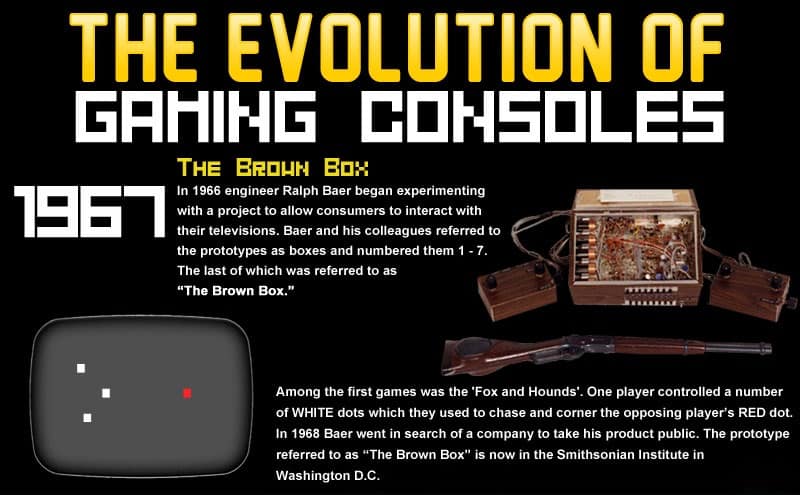Game consoles have come a long way in a very short period of time. The gamers of today would get a hearty laugh if they were to experience the gaming consoles that first sparked the passion for digital gaming that many of us hold so dearly. It all started back in 1967. Many of you may be thinking of pong already. However, the Atari classic did not hit the shelves until 1976. It was The Brown Box that was the real pioneer. This machine was the very first piece of equipment that allowed people to interact with their televisions. One of the first games was “Fox and Hounds.” In this game, one player controlled a number of white dots whose job was to chase and corner the opposing players red dot. It was rudimentary but groundbreaking. The Brown Box is now housed in the Smithsonian Institute.
In 1971, Magnavox became the first company to actually license a “TV Game” system. The Odyssey cost $100 when it was first released and sold 330,000 units. There was no audio output available, and the machine only simulated colors due to the fact it could transmit only black and white images. By 1976, the Atari finally came on the scene along with many other gaming consoles whose manufactures recognized the true potential in the trend. The competing systems for Atari included the Fairchild Channel F, the Coleco Telestar Arcade, and the Magnavox Wonder Wizard.
Atari made its move into iconic status with the release of the VCS 2600, a full-color, sound-capable, cartridge-utilizing piece of equipment. It was cutting edge and sold over 30 million units. When it was released in 1977, it costs a considerable $200. Nintendo first came on the scene with the Color TV Game Series. However, it was not until 1983 that we see names more familiar to today’s gamers making an entrance. These familiar names include Sega, Mattel, Milton, and Casio. Nintendo established its dominance in the U.S. market with the NES and managed to hold onto the lead through 1991 with the release of the Super NES. Soon afterward, Sony changed the game by releasing the PlayStation in 1994. Game consoles were now capable of using digital CD-Roms as a platform, creating the foundation for the gaming world we see today.

Source: OnlineGameDesignSchools.org


